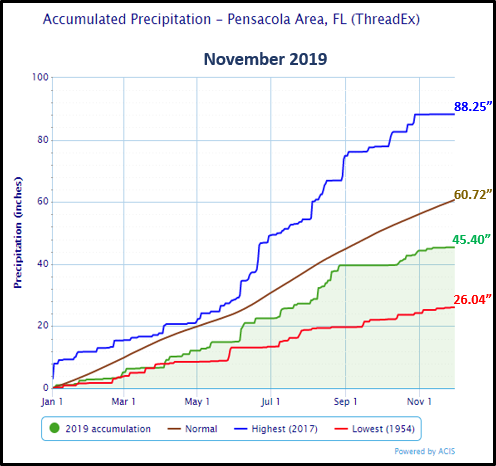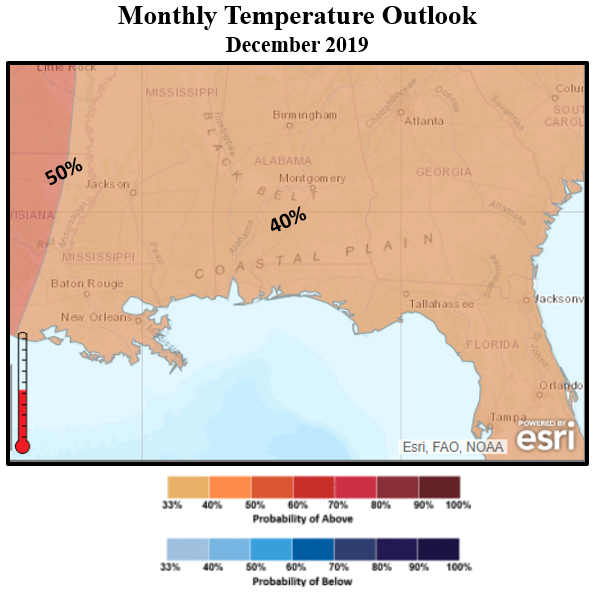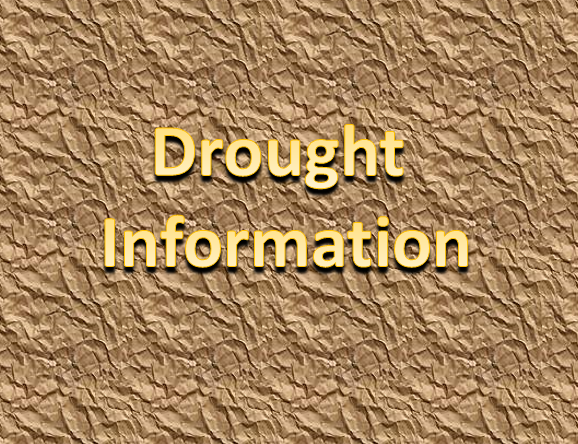November 2019 Climate Summaries
Mobile Alabama and Pensacola Florida Area
Joe Maniscalco - Meteorologist/Forecaster/Climate Program Lead
National Weather Service Mobile Alabama
December 7, 2019
November 2019 in Review - November saw a widely varying daily temperature distribution about seasonal normals. Despite high temperatures on several days reaching nearly ten degrees above normal, a few cooler than normal days caused high temperatures for the month at both Mobile and Pensacola areas to even out close to normal. Overnight lows came in between 3 and 5 degrees below normal. One record high was reached at Mobile late in the month while two record highs were posted at Pensacola. Mobile and Pensacola saw record cold on the 13th when temperatures plunged into the upper half of the twenties. This is a little early for the first freeze seasonal occurrence by a few weeks. Unfortunately, November saw very little rain with monthly rainfall being short by a few inches. The most considerable annual rainfall departures have swelled to over fifteen inches below normal at Pensacola. Abnormally dry conditions are in place for much of the area east of the Alabama River.
Mobile Alabama Area - The average monthly high of 70.6° turned out to be normal for the month. The average monthly low of 44.0° was 4.6° below normal. The average monthly temperature of 57.3° was 2.3° below normal. A record low of 26° on the 13th smashed the previous record of 31° set on this date back in 1911. A record high of 79° on the 29th tied the previous occurrence for this date in 2017. (Fig. A) shows how the Mobile area temperatures compared to the seasonal normal monthly highs and lows, which are shown by the colored dashed lines. Total rainfall for November (Fig. B) measured 1.27" or 3.86" below normal. The annual rainfall deficit is now a little over two inches below normal (Fig. C).
Click on the Mobile Alabama area climate graphics below to expand:

|

|

|
Pensacola Florida Area - The average monthly high of 71.5° was 1.2°above normal. The average monthly low of 47.7° was 3.5° below normal. The average monthly temperature of 59.6° was 1.1° below normal. A record low of 29° on the 13th broke the previous record of 30° set on this date back in 1911. Two record highs were reached => 84° on the 27th tied the previous occurrence for this date in 1973 and 81° a few days later on the 30th broke the previous record of 80° set on this date in 2016. (Fig. D) shows how the Pensacola area temperatures compared to the seasonal normal monthly highs and lows, which are shown by the colored dashed lines. Total rainfall for November (Fig. E) measured 1.09" or 3.64" below normal. The annual rainfall deficit has grown to 15.32" below normal (Fig. F).
Click on the Pensacola Florida area climate graphics below to expand:

|

|

|
December Climatology and Outlooks:
The latest monthly outlook for temperatures to close out the year favors a 40% probability of above normal temperatures from the southeast US to the coastal plain. Equal chances of above or below normal rainfall is favored. The latest drought outlook calls for drought to persist from portions of southern Georgia to the north-central Florida Panhandle.
Click on the snap shots below to expand:

|

Outlook |

Outlook |

|
Climate Prediction Center's Interactive Long Range Outlooks
Additional Climate Links:
The links below are intended to provide additional climate information, education and outlooks. The National Weather Service Mobile Alabama's Climate and Past Weather page provides climate data at your fingertips for many observation points in the local forecast area by accessing the NOWData tab as well as many other climate resources. The Climate Prediction Center Link provides short and longer range climatic outlooks and education about the larger scale global circulations that impact temperatures and weather. With the large agriculture and farming presence along the central Gulf coast, the Drought Monitor link provides updates on drought trends and impacts. Another very helpful resource is the Community Collaborative Rain Hail and Snow (CoCoRaHS) network, which is a large group of volunteers working together to measure and map precipitation (rain, hail and snow). The aim of CoCoRaHS is to provide the highest quality data for natural resource, education and research applications. You can be a part of the CoCoRaHS team by becoming a volunteer rainfall observer. To learn more click on the CoCoRaHS link below.
National Weather Service Mobile AL Climate and Past Weather
Climate Prediction Center (CPC)
CoCoRaHS Network Water Year Summaries
Questions or Comments:
Contact: Joe Maniscalco, WFO Mobile, AL at joe.maniscalco@noaa.gov
